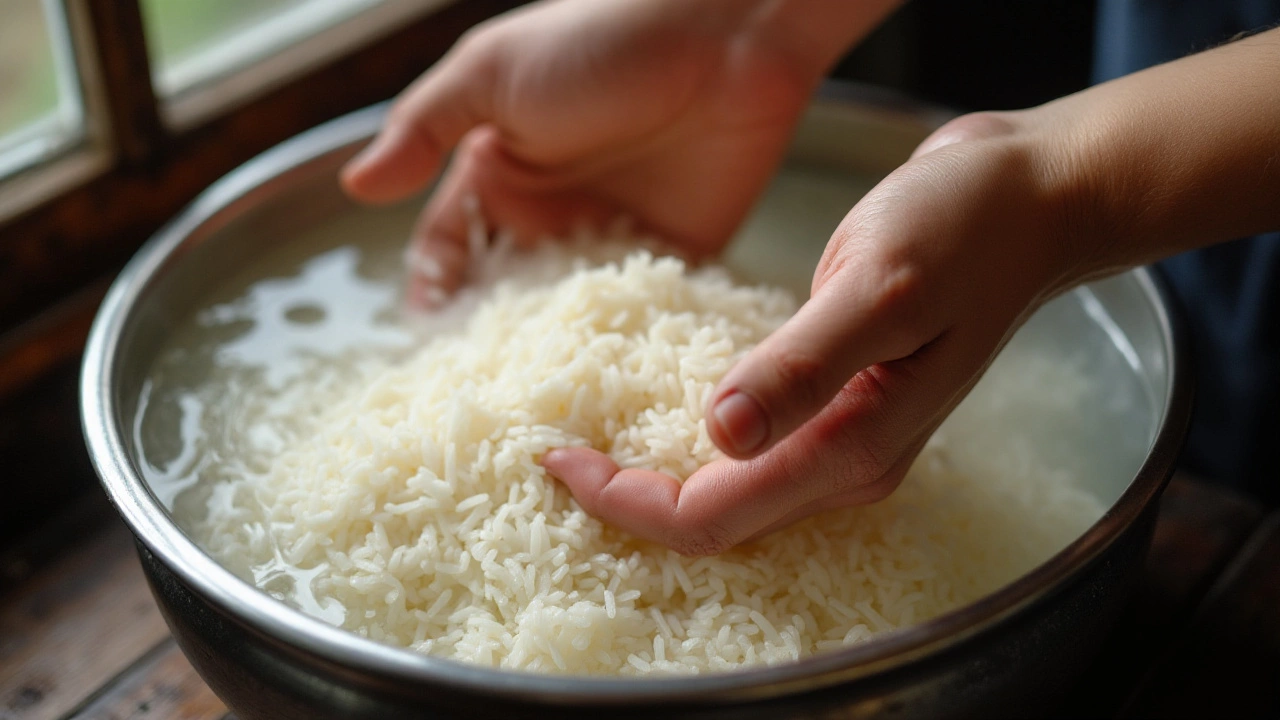Before the aroma of a warm bowl of rice fills the room, there is a simple yet crucial step often overlooked: washing the rice. This practice, rooted in both tradition and science, affects the texture, taste, and safety of the cooked rice. By rinsing away excess starch and impurities, one can elevate even humble grains to a dish of perfection. Get to know why this essential kitchen habit deserves your attention.
Rice Starch Removal: How to Clean Rice Properly for Better Cooking and Health
When you buy rice, you're not just buying grains—you're buying rice starch, a natural carbohydrate that coats each grain and affects how it cooks, sticks, and digests. Also known as surface amylose, this starch is what makes rice clump together if not rinsed properly. In Indian kitchens, where rice is eaten daily, skipping this step often leads to gummy, heavy meals—even if the rice itself is high quality. Removing excess starch isn’t just about texture; it’s about digestion, flavor, and even blood sugar response. Studies show that rinsing rice can reduce arsenic levels by up to 30%, and it helps prevent the sticky, glue-like consistency many people dislike.
Many home cooks think rinsing rice is optional, but in traditional Indian farming and household practices, it’s standard. Farmers in Punjab and West Bengal often soak and wash rice before milling to remove husk dust and surface starch. Even today, rural households rinse rice three to four times before cooking, especially for dishes like idli, dosa batter, or biryani where separate grains matter. If you’ve ever had a bowl of rice that turned into a paste, it wasn’t the rice—it was the starch you didn’t wash off. The same principle applies to basmati, sona masoori, or even brown rice: more rinsing = fluffier results.
It’s not just about water. The method matters. A quick rinse under the tap won’t cut it if the grains are dusty or overly polished. You need to agitate the water, let the starch settle, then pour off the cloudy liquid—repeat until the water runs clear. Some people use a fine mesh strainer; others use a bowl and gentle swishing. Either way, you’re removing the fine powder that turns into gummy glue when heated. This step also helps rice cook more evenly. No more undercooked centers or mushy edges.
And it’s not just for taste. People with sensitive digestion or diabetes benefit from lower glycemic impact when starch is reduced. Less sticky rice means slower sugar release. That’s why many Ayurvedic diets recommend rinsing rice thoroughly before cooking. Even if you’re not following a special diet, you’ll notice the difference: cleaner flavor, better mouthfeel, and grains that stay distinct instead of clumping like glue.
Below, you’ll find real advice from farmers and home cooks who’ve tested these methods across India’s diverse climates—from humid Kerala to dry Rajasthan. You’ll learn how to handle different rice types, when to skip rinsing (yes, sometimes you should), and how to avoid common mistakes that ruin texture. Whether you’re making everyday dal-chawal or preparing rice for fermentation, the right starch removal makes all the difference.
